See why Christine loves sewing garments with linen!
Today, we talk to Christine about sewing garments with linen. Christine was a contestant in our Halloween Costume Contest. Her sewing skills really come to life through her re-enactment garbs. Hearing someone talk about their passion is the best way to get inspired!
Hello Christine! Please tell us a little bit about yourself and how your love of sewing developed.
Hello! Well, I’m an Ohio born and bred girl. I love learning about history, seeing locations where events took place, and I’ve learned to love traveling. I grew up attending theatre and ballet with my grandpa practically every Christmas where my love for the performing arts developed. I had decided I would go into acting when I grew up when I figured becoming a singing ballet dancer driving a pink and purple taxi wouldn’t pan out.
I explored theatre and music in high school and college, but was steered toward sewing by my professor. I didn’t know how to sew even though I watched my mother and grandma since I was very small. In the class everything from patterning to cutting to putting the whole garment together from just a picture made complete sense. I have been learning, designing, and sewing ever since.
What types of garments do you enjoy sewing?
I really like period garments. I have made Renaissance, Georgian, Medieval, Regency, and Victorian/Edwardian clothing. I’m thinking soon I might try a Civil war era dress just for something different. When I have time, I do make myself modern-ish clothing that is usually sleeveless or rework a vintage look, but I’m lucky if that free time happens once a year.
Do you prefer representing a particular time period with your garments? What attracted you to this era?
I like being a “picture picker”. I’ll pick the back of a Georgian dress, with the neckline of a Victorian, decorated with a Renaissance style, and finishing with a Medieval sleeve. When making for myself, I love mixing the periods to finish with a whole different, unique look. Yet when I sew for others, I am a stickler to stay in their chosen period of time.
I make mostly Renaissance and Victorian clothing/costumes. I worked at a Renaissance Faire in PA for a few years where I learned very quickly Renaissance and Victorian clothing. The Ren. Faire ran from August to October and then we went indoors to the Victorian Mansion on site and performed different Victorian shows from November to February. I make these because I’m the most comfortable with their design and occasionally complex construction. I like that they are outrageously gorgeous in shape and wear.
What are some of the difficulties you encounter while sewing historical garbs?
I sometimes look at my research pictures and think, "How did they do that?!" which makes patterning harder and creativity easier. Occasionally when I decide to be lazy I’ll purchase a period pattern. The purchasing of period patterns, even though the pictures maybe beautiful, may not finish looking the same depending on body types. What looks great flat on the table can look horrible on a person’s body.
I really think the hardest part is sewing for an invisible buyer. If I’m making a bodice to sell, I don’t have sizes or a person to fit on. It’s a total shot in the dark with hopes that someone out there in the cyber stratosphere will like it and take a chance and buy it.
So, where do you usually begin? Walk us through the your typical process when creating an attire.
In making for someone else, I try to find out what character they are trying to portray. A French nobleman would wear a totally different garment than a viking sword master. Once I get a background on their character, I start doing research online, as well as in my library of fashion and costuming books. I collect a variety of pictures and historical descriptions relating to their character and background information. I try to do a few drawings if I’m mixing two or more garments and supply color options.
When I’ve finished my research, I present to them my findings and gather measurements. Most of the time they tell me to do what looks good, but other times they can be very particular about what they want in their costume. If this is a paid job, I like to have at least half up front and then the other half when I finish the project.
Once we have a plan and a shopping list of what I need, I go fabric shopping with my colors (if I have swatches, I go off of those). I like to have all of my fabrics present before I attack my project. I start to pattern and cut a mock up before I head into the fashion fabrics. When the mock-up is done, I request a fitting. I like to have everything done as close to correct as possible in the mock-up and then I use my mock-up as my new pattern after the adjustments.
I cut and put together the fashion fabric with my new pattern and when everything is together I ask for a final fitting before I do the decorating. When everything is done and I receive the rest of the payment, the costume now belongs to you.
What element of sewing historically accurate garbs do you feel is your biggest accomplishment?
Ooh, that’s a difficult question. I am very proud of my firsts: corset, doublet, designed Renaissance and Victorian woman’s outfit from start to finish.I think the one that sticks in my mind the most is my first Victorian dress. It was for our Dickens’ show when I was in PA and the character was Belle from Christmas Carol.
I designed her in her ballgown made out of a mint colored summer weight silk. It had a very fine cream overlay shirred up to drape nicely. The shirring was covered with dark green satin bows and grosgrain ribbon with fake blue flower adorning them. The bodice was cut to be off the shoulder with a yoke also adorned with fake blue flowers, edged in cream lace, and a dark green bow center front. It was beautiful!!
A very close second would be the doublet and breeches for Devere. The doublet was made from summer weight grey wool with slight diagonal black striped with red piping and grey trim up the middle. The breeches were the same grey wool with the stripes going up the sides of the legs. He also had a red linen shirt underneath his doublet. He was quite a dashing fellow.
Why do you choose linen for your clothing?
I choose linen because it is breathable, beautiful, period appropriate and it drapes beautifully. Also there are a variety of weights suitable for a variety of projects.
I can use the IL019 for men’s and women’s renaissance shirts.I can also use heavier weights like IL081 for middle class women’s bodice and skirt and men’s doublet and breeches. I haven’t tried with everyday Victorian and Civil war dresses but I don’t doubt the heavier weight would also be wonderful for those too. Even if I don’t use linen as the fashion fabric, I always use it as a lining fabric.
What have you sewn mostly recently?
Right now I’m working on some Victorian dresses for Chekov’s Three Sisters; which still sit in pieces but should come together in the next few weeks. Before that I finished a Victorian corset for a close friend’s Halloween costume and made some men’s linen Renaissance shirts to restock my Etsy.com shop.
When do you get to show off your beautiful designs?
Many of my designs show up in church plays and Renaissance faires as of late. Things I have worked on but not designed can be seen in musicals, operas, and plays at the places I’ve worked. I do sell some of my hard work on www.etsy.com under the seller name firebugz1 and I’ve had buyers all over the US.





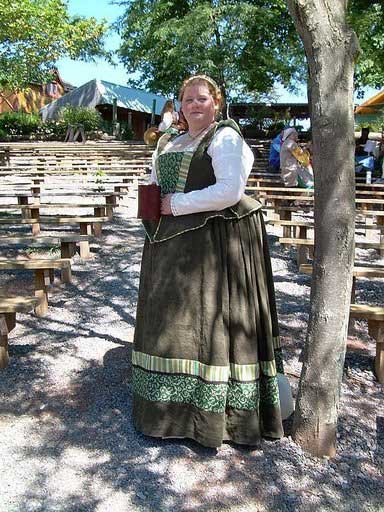
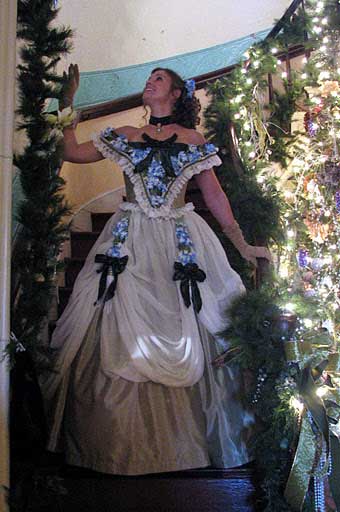
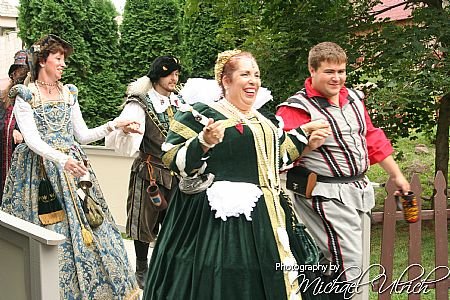
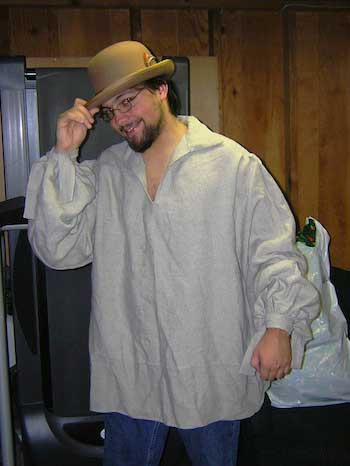


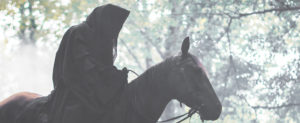
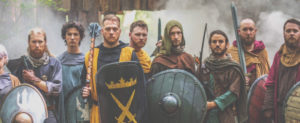
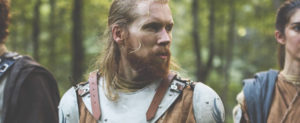












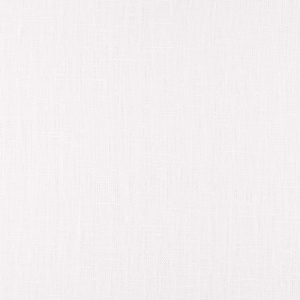




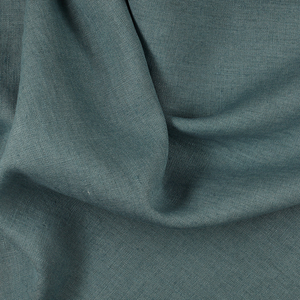


















3 Comments
Judy Moore
Christine, where do you live in Ohio. I am originally from Ohio, too. I currently love living in San Angelo, Texas.
Judy Annie
Becky
Where does Christians patterns of different time periods? I am a seamstress and would love to head in that direction. I have only been to one renaissance festival and loved the it. Didn’t wear any costumes. But would love to make them. I use to work for Disney and worked on all different costumes. Thanks for any information. Becky
Barbara Frame-Love
I love the historical look and love the pioneer style of dress as well. I am a hand stitcher/quilter with no machine in the house! Right now I am down with a light heart attack but always have a project close by!
Hopefully I’ll be back soon to check out your site further.